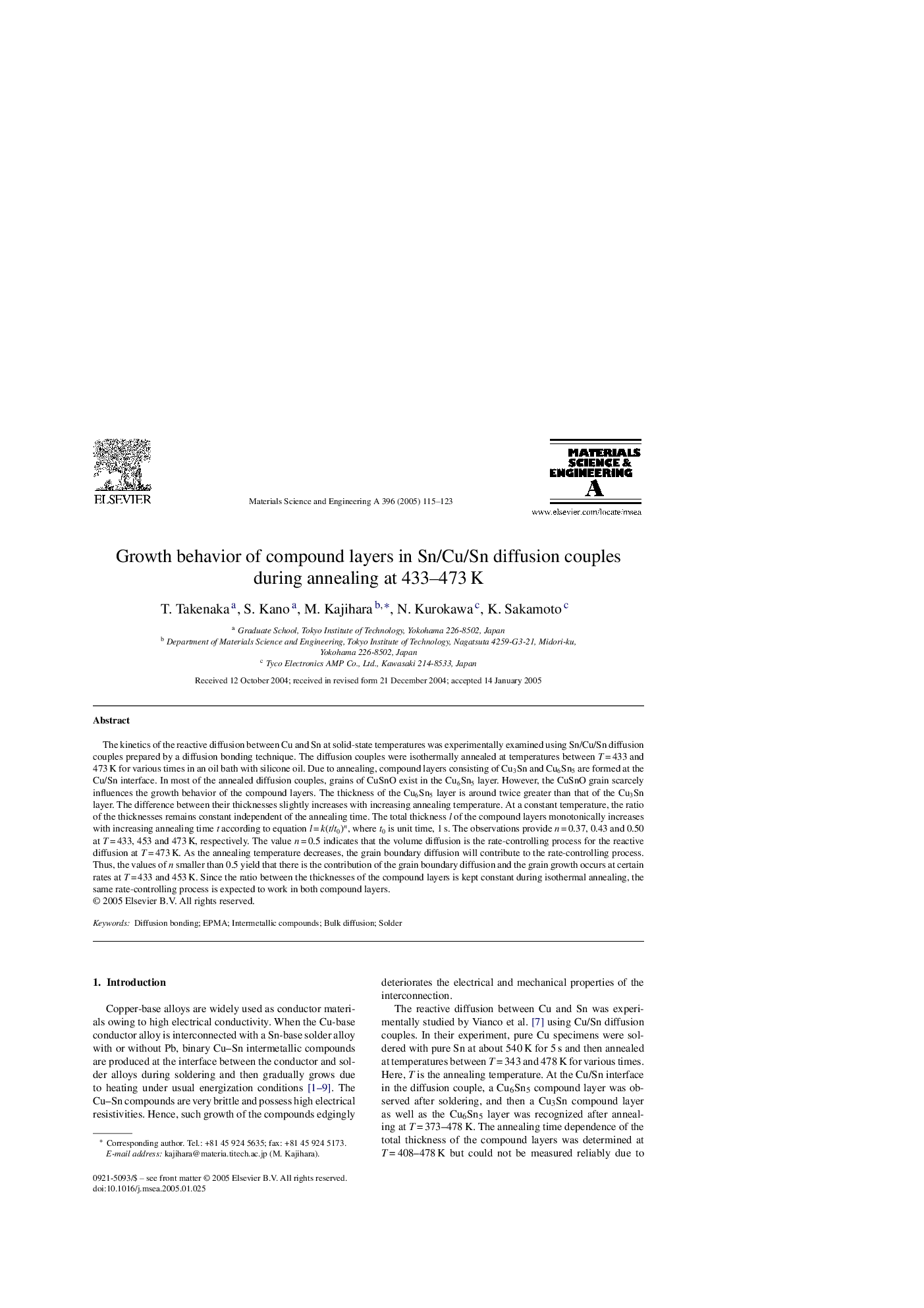| Article ID | Journal | Published Year | Pages | File Type |
|---|---|---|---|---|
| 9796331 | Materials Science and Engineering: A | 2005 | 9 Pages |
Abstract
The kinetics of the reactive diffusion between Cu and Sn at solid-state temperatures was experimentally examined using Sn/Cu/Sn diffusion couples prepared by a diffusion bonding technique. The diffusion couples were isothermally annealed at temperatures between T = 433 and 473 K for various times in an oil bath with silicone oil. Due to annealing, compound layers consisting of Cu3Sn and Cu6Sn5 are formed at the Cu/Sn interface. In most of the annealed diffusion couples, grains of CuSnO exist in the Cu6Sn5 layer. However, the CuSnO grain scarcely influences the growth behavior of the compound layers. The thickness of the Cu6Sn5 layer is around twice greater than that of the Cu3Sn layer. The difference between their thicknesses slightly increases with increasing annealing temperature. At a constant temperature, the ratio of the thicknesses remains constant independent of the annealing time. The total thickness l of the compound layers monotonically increases with increasing annealing time t according to equation l = k(t/t0)n, where t0 is unit time, 1 s. The observations provide n = 0.37, 0.43 and 0.50 at T = 433, 453 and 473 K, respectively. The value n = 0.5 indicates that the volume diffusion is the rate-controlling process for the reactive diffusion at T = 473 K. As the annealing temperature decreases, the grain boundary diffusion will contribute to the rate-controlling process. Thus, the values of n smaller than 0.5 yield that there is the contribution of the grain boundary diffusion and the grain growth occurs at certain rates at T = 433 and 453 K. Since the ratio between the thicknesses of the compound layers is kept constant during isothermal annealing, the same rate-controlling process is expected to work in both compound layers.
Related Topics
Physical Sciences and Engineering
Materials Science
Materials Science (General)
Authors
T. Takenaka, S. Kano, M. Kajihara, N. Kurokawa, K. Sakamoto,
